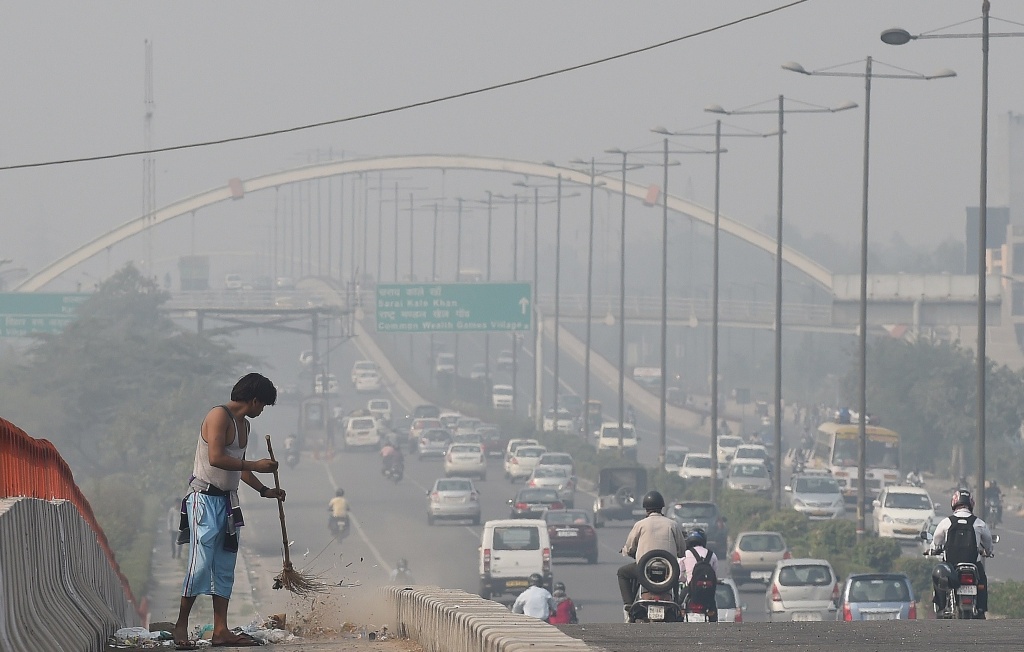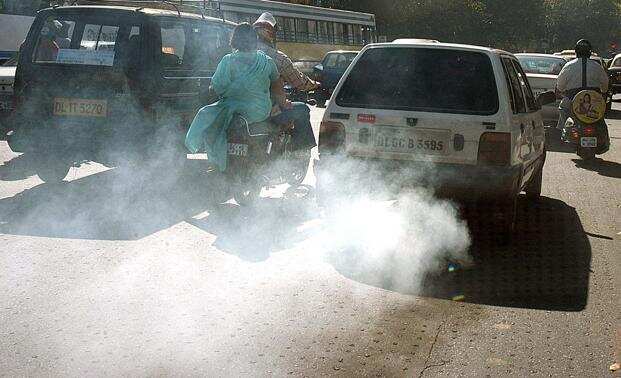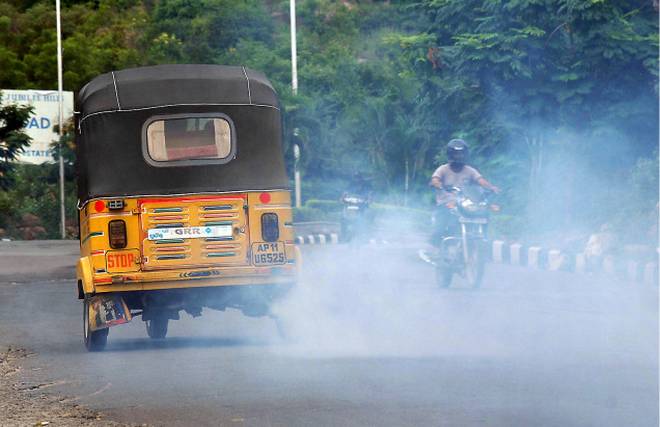Delhi is known around the world as India’s capital city, and for its monuments, gardens, and markets. But in recent years it has become known as the world’s most polluted city, and if you’re reading this, you probably know a fair bit about it. The smog lasts all year, and is responsible for a significant number of illnesses and premature deaths.
So how did we get here? It could be an innocent lack of foresight in previous decades about how unchecked population growth and urbanization would make it a cesspool of rotting garbage and foul air. More damningly though, it is the average Indian citizen’s lack of responsibility towards public hygiene and safety, despite possessing an ingrained cultural sense of keeping their bodies and homes clean. This mindset has permeated India’s public administration, which didn’t change course swiftly once problems became apparent.
Progress is far too slow.

Photo credit: Prakash Singh / AFP / Getty Images
As of the 2020s, Delhi’s pollution is at the forefront of public consciousness. There is plenty of talk, some action, and staggered implementation with little result. The AQI levels in Delhi show no signs of going below 100 (“unhealthy for sensitive groups”) and easily score above 300 (“hazardous”) on most days. This is a monumental problem to tackle given how intertwined pollutive activities are, and the lax implementation and reporting of pollution control measures. But as I delved into the issue, I came across an interesting statistic that gave me pause:
Now, 4.3% isn’t a small amount. Imagine eliminating nearly 5% of ALL of Delhi’s pollution. If we made this happen, it’s very likely we would register a noticeable dip in Delhi’s AQI. Days on which the AQI numbers touch 300 would otherwise be 285 (assuming AQI readings changes linearly with pollution levels). This makes the important difference between rendering everyone including the working population ill, and making only the most vulnerable (senior citizens and children) sick. Of course, we’re not saying we should stop here. But tackling old vehicles is a great place to start, and for many reasons.
Why go after old vehicles?

Photo: Sanjeev Verma / HT
First, the problem posed by them is clearly visible. When vehicles burn too much fuel with too little oxygen when it’s a bit too cold in the engine, they release dense smoke filled with soot (also known as black carbon) – which is both a pollutant and a highly potent greenhouse gas. Vehicles that spew dense smoke, such as public buses, cargo lorries, and auto rickshaws, are a common sight on any Indian road. Drawing public attention towards this bunch of unfit, smoking vehicles is easy, and is a crucial step towards eventually dealing with all other vehicles.
Second, we need a label for these vehicles. Given the sheer diversity of vehicle types in India, age is the best way to delineate polluting vehicles. So let’s call this bunch of unfit vehicles “old”, because that’s what most of them are. Given the suboptimal quality of roads in this country, vehicles develop an above-average level of wear and tear, and tend to become unfit after about 10-15 years, or by some standards, even after 8 years.
They pollute the most.
Third, old vehicles pollute the most, and are a minority causing the majority of the problem. Here are some statistics. A BS-I diesel car (pre-2000) emits 31 times more particulate matter than a BS-VI diesel car. A BS-II diesel car (pre-2005) emits 17 times more PM than a BS-VI counterpart.

Photo: Altaf Qadri / AP
Commercial vehicles, which pollute the most among this subset of old vehicles, are overwhelmingly old. According to the Ministry of Road Transport and Highways, Light, Medium and Heavy commercial vehicles, contribute nearly 70% of transport-based pollution. This is despite the fact that commercial vehicles make up only 5% of all vehicles. Moreover, “the older commercial vehicles, typically manufactured before 2000 before the emission norms were implemented, constitute less than 1% of the total fleet but contribute to 15% of the total vehicular pollution as these pollute 10-25 times than a modern vehicle.”
Aside from releasing a disproportionate amount of smoke, old vehicles also don’t handle well and cause accidents. Unfit vehicles need to be replaced, bearing in mind the few people who may not be able to afford to buy a new vehicle just yet. Government subsidy programs can help finance these purchases, like the one proposed in the long-overdue scrappage policy approved in February 2021. But incentive schemes that pull people towards new vehicles are limited by how extensively they are rolled out and their financial backing. An effective way to change behaviour is incorporating the public health cost of driving a polluting vehicle as a disincentive, through taxes or fines. These need to be stepped up.
Emissions taxes are misplaced, and fines are held back.

Photo: Surya Sridhar / The Hindu
A key part of the transition to less air pollution is putting a price on harmful emissions, as a tax or a fine. There are emissions taxes like the Environment Compensation Charge but they only apply to the sales of vehicles. These taxes end up tackling one-time financial decisions but not the recurring behaviour of driving a polluting vehicle.
There is also a fine for vehicles with excess smoke, but it is only levied after a formal test. In the Delhi Motor Vehicle Rules 1993, officers must test the vehicle on the spot using an emissions testing kit and prove it isn’t within limits (DMVR section 99b). However, the lack of pollution testing kits available to officers on the street means the people driving smoky vehicles are woefully undercharged.
How the Motor Vehicle Rules deal with polluting vehicles:
Unlike section 116 of Central Motor Vehicles Rules 1989, there is no rule in the DMVR that allows officers to penalize a driver just because their vehicle is visibly polluting.
In the CMVR, if an officer does book a vehicle for visibly excessive pollution, they may cancel the driver’s PUC certificate and direct them to a Road Transport Office to rectify problems and replace their pollution certificate within 7 days (DMVR 99 a-b). But the fact that only 23% of vehicles (of all categories) turn up for emissions tests in Delhi means most drivers probably continue using old, unfit vehicles and release more smoke into the air, even if they have a notice from the traffic police to re-test the vehicle. It is unclear whether the CMVR or DMVR rule takes precedence in Delhi. Either way, given Delhi’s pollution levels, we think the rules do not go far enough.
Speaking of measures that went far, the Supreme Court imposed a ban on 10 year old diesel and 15 year old petrol vehicles in 2018. Did it work? No. Given regular anti pollution drives that continue to find and impound polluting trucks, we think not.

Photo: Prashanth Vishwanathan / Bloomberg via Getty
So bans don’t work, taxes don’t target the correct behaviour, and fines aren’t levied enough because the rules don’t allow them to be applied well,. What’s more, we are literally and figuratively in the haze. We can’t see the problem clearly because we lack the data. Based on responses to RTIs filed by Jhatkaa.org, it appears that the Delhi traffic police and transport departments don’t compile and release information about PUC fines and confiscations. To be fair to them, we’re not asking for it loudly enough.
The solution: Fining old, smoky vehicles.
True change occurs when individuals act differently, with a well-placed push from the system. Through its campaign, Jhatkaa.org is proposing:
- …an on-the-spot smoky exhaust fine on any vehicle that is visibly emitting excess smoke, especially old commercial vehicles.
- …an amendment to the DMVR (if applicable), that allows officers to determine excess pollution by eye.
- …that records about PUC violations and penalties are compiled and published by the Delhi Transport Department or Traffic Police Departments.
An on-the-spot penalty would work wonders since it targets driving behaviour, and helps them become aware of vehicular pollution, not just how ugly it looks, but also how much money it would cost them, let alone its larger costs to public health.
On a systemic level, targeting the most polluting bunch of the major causes of air pollution of the city, will yield significant results. If the 80-20 principle is applicable in this situation, it would pay to go after the minority of people or systems causing the majority of a problem. Since transportation also underpins a number of other industries including food and construction, the impact of an aggressive on-the-spot penalty or even instant confiscations, while allowing no exceptions especially for commercial vehicles, will be dramatic.
If you liked this article, click on the button below, read, and sign our petition to get old, polluting vehicles off the streets of Delhi!
Also check out our explainer about the causes Delhi’s pollution, and potential solutions.


